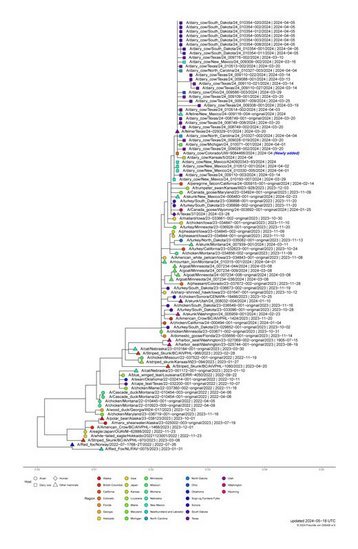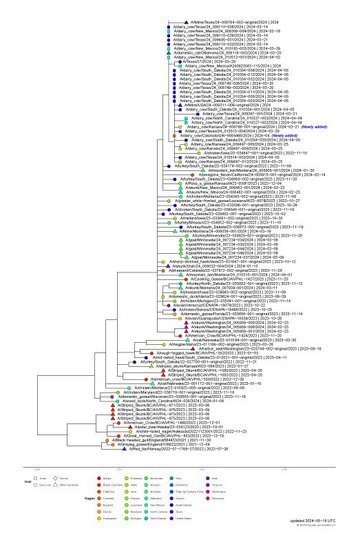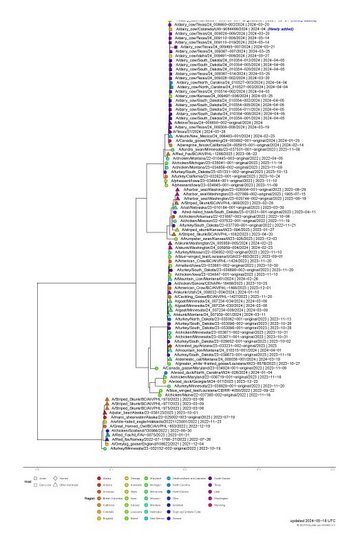H5N1 Bird Flu Circulating in Dairy Cows in the United States
The clade of highly pathogenic avian influenza (HPAI) viruses causing outbreaks in wild and domestic birds around the world, is appearing in dairy farms across several U.S. states since at least April 2024. These viruses recently caused morbidity and mortality in over 60 mammalian species, mostly carnivores, after consuming infected carcasses. Although cows were until recently not considered to be at risk of infection, the current outbreak demonstrates influenza remains unpredictable.
The route of exposure of these dairy cows and the mode of virus transmission remains unknown. The virus RNA was found at high concentrations in raw milk. Several animal species at dairy and poultry farms, as well as a growing number of farm workers were affected. Initial data released by the USDA’s Animal and Plant Health Inspection Service on GISAID show that the viruses in these cows, other animals and the farm workers are closely related. A mammalian adaptation marker (E627K) was noted in only one farm worker so far, and all farm workers suffered from conjunctivitis. In recent human cases, workers have developed mild eye symptoms alongside respiratory symptoms. GISAID teams continue to facilitate the work of their U.S. based colleagues and assist with the timely sharing of the latest genomic data that will help to monitor the outbreak and stop it.
Hundreds of full virus genome sequences from this outbreak have been made available in GISAID’s EpiFlu database, from mammalian and avian host specimens collected in at least 13 States. Since the previous update on 25 July 2024, genetic sequence data from 84 new specimens collected in U.S. were made available by the USDA, without detailed location and complete collection date; In addition, three new samples collected in Texas on 2024-04-14 were made available by the University of Texas Medical Branch. The latest trees, based on representative subsamples, are dated to 26 July 2024.
This collection includes many virus sequences from dairy cows, but also closely related viruses detected in poultry and wild birds and in mice, cats and other mammals as well as the recent human infections. Although metadata such as sampling date and location are unfortunately missing from recent datasets, the available data allow a close watch on mutations that may arise as a consequence of virus adaptation to new hosts.
Subsampled phylogenetic trees with focus on recent U.S. H5N1 samples shown for HA, NA or PB2, respectively
(as of 26. July 2024)




